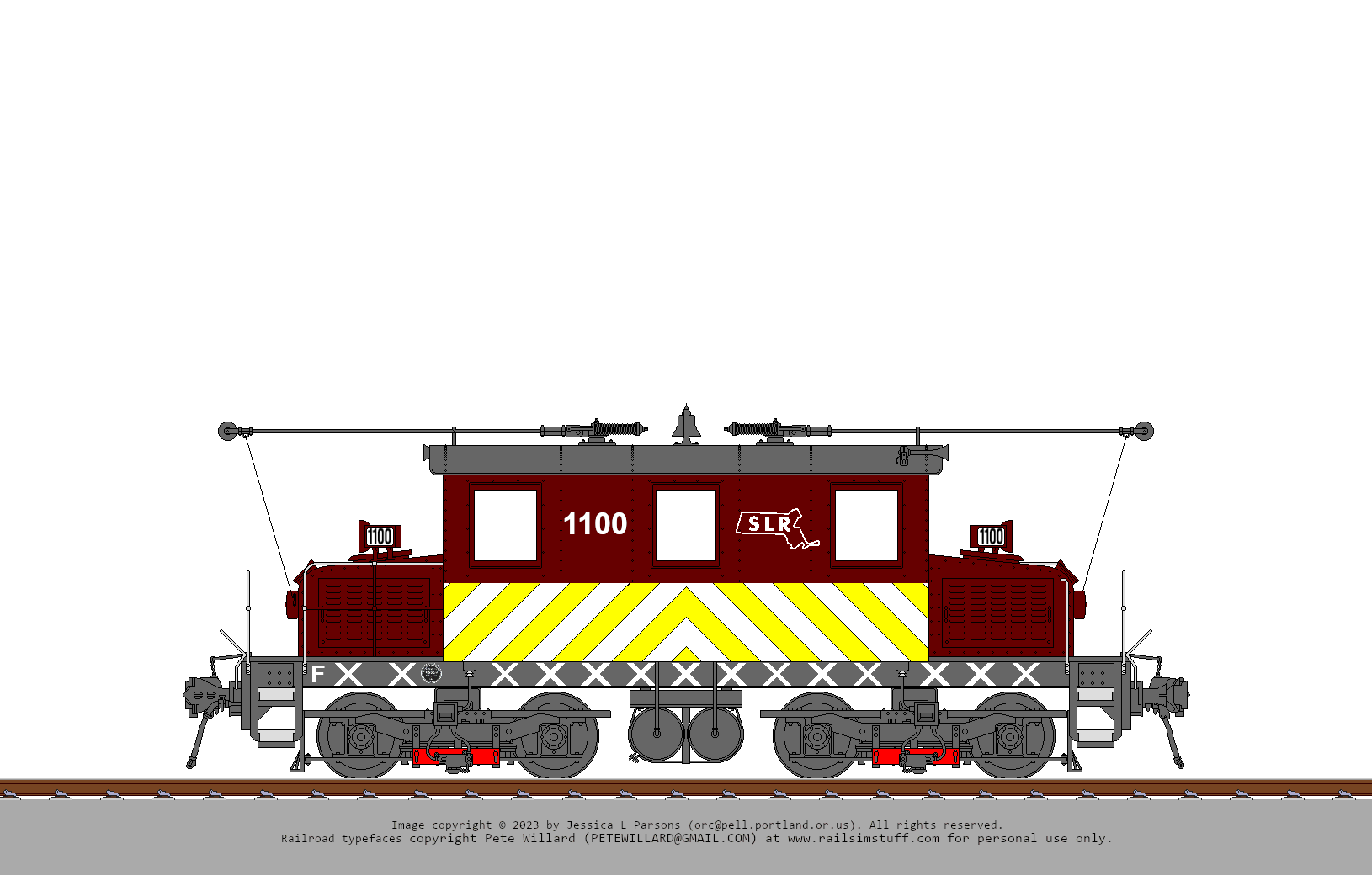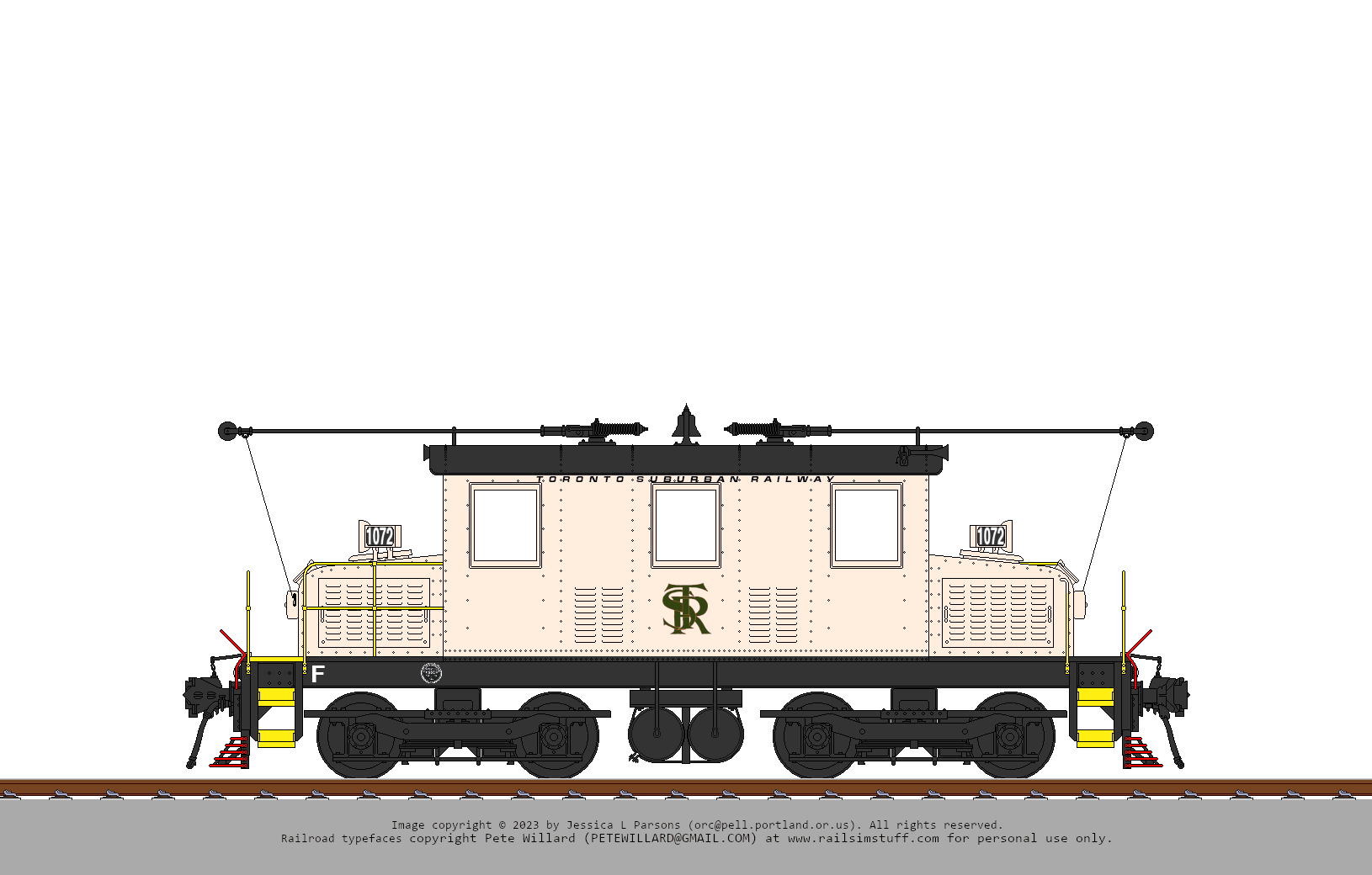Lincoln, Wonalancet and Conway 40-42 were the last electric locomotives purchased by the interurban line, and spent their first 27 years in operation on the Parsons Vale to Lincoln branch of the railroad. After the PV&T purchased the line, these units (now PV&T numbers 280-282) were sold to the Parsons Vale Rapid Transit Company, where they became 1040, 1018, and 980 and remained in operation for another 28 years under PVRT management, with the surviving unit returning to its PV&T number in 1965 when the PV&T leased the PVRT.
1018 & 980 were rebuilt for 3000VDC operation in 1947 so they could continue operating on the Parsons Vale<->Concord mainline after it had the voltage changed to 3000VDC for PV&T runthrough trains, while 1040 & 1018 were left at 600VDC to operate the Laconia branch.
1040 was rebuilt to run under 3000VDC, and went to the Seashore Trolley Museum in 1961 as online traffic declined, 1018 then ran until 1964 when it was wrecked when the Winnisquam bridge collapsed as it was crossing it, and 980 (now PVRT 282) was rebuilt to run under 3000VDC, and operated until 2024, when it was replaced with a class O and sent to Musée ferrovaire de Parsons Vale.
In 1950, the SLR merger brought 4 more class B motors (class 280b) to the roster, but they were never converted to 3000 VDC and left the property when the voltage changeover there happened in 1958 (#317 was sold to the Atlantic Shore Line in Maine, the others went to equipment brokers.)
Finally, one rebuilt class A (class 280d; originally LE&N #234, then Ontario Radial Railway Company #906) & three class D motors (class 280c; originally Hamilton & Brantford #1,3-4, then ORRC #900, 902, and 905) came onto the roster during the Ontario Southwestern takeover. These units are 1500VDC, and are much more traditionally configured with trolley poles instead of pantographs, and most importantly all still operate on the ORRC.


